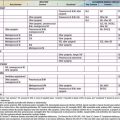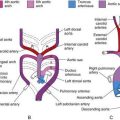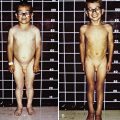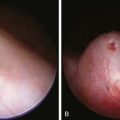Chapter 698 Osteoporosis
Osteoporosis is relatively uncommon in children even though it is the most common bone disorder in adults. Bone volume is diminished and the incidence of fractures is greatly increased in this condition. In contrast to osteomalacia, which shows undermineralization and normal bone volume, histologic sections of bone in all forms of osteoporosis reveal a normal degree of mineralization but a reduction in the volume of bone, especially trabecular bone (vertebral bone). In osteoporosis, by definition, there is also a reduced amount of bone tissue (termed osteopenia), which is associated with atraumatic (pathologic) fractures. Osteoporosis in children may be primary or secondary (Table 698-1). The primary osteoporoses can be divided into heritable disorders of connective tissue, including osteogenesis imperfecta, Bruck syndrome, osteoporosis-pseudoglioma syndrome, Ehlers-Danlos syndrome, Marfan syndrome, homocystinuria, and idiopathic juvenile osteoporosis. Secondary forms of osteoporosis include various neuromuscular disorders, chronic illness, endocrine disorders, and drug-induced and inborn errors of metabolism, including lysinuric protein intolerance and Gaucher disease.
Table 698-1 RISKS FOR OSTEOPOROSIS
ENDOCRINE DISORDERS
Female Hypogonadism
Male Hypogonadism
INFLAMMATORY DISORDERS
GASTROINTESTINAL DISORDERS
BONE MARROW DISORDERS
CONNECTIVE TISSUE/BONE DISORDERS
DRUGS
MISCELLANEOUS DISORDERS
The treatment of secondary osteoporosis is best achieved by treating the underlying disorder when feasible. Hypogonadism should be treated with hormone replacement therapy, especially in thin athletic women. Calcium intake should be increased to 1,500-2,000 mg/day. In glucocorticoid-induced osteoporosis, an emphasis on the lowest possible dose to prevent disease activity (inflammatory bowel disease) with alternate-day or topical therapy and the use of inhaled glucocorticoids in asthma is essential. Special diets for inborn errors of metabolism are also appropriate. Celiac disease may be overrepresented in adults with osteoporosis and should be screened for and treated appropriately (Chapter 330.2). Treatment with bisphosphonates that inhibit bone resorption in certain secondary (glucocorticoid-induced) and adult-onset osteoporosis has been successful. Bisphosphonate therapy is also beneficial in osteogenesis imperfecta and cerebral palsy.
Abinun M. Successful hematopoietic stem cell transplantation for osteopetrosis due to TCRIG1 mutation. Arch Dis Child. 2010;95(12):984-985.
Birch K. Female athlete triad. BMJ. 2005;330:244-246.
Bowden SA, Robinson RF, Carr R, et al. Prevalence of vitamin D deficiency and insufficiency in children with osteopenia or osteoporosis referred to a pediatric metabolic bone clinic. Pediatrics. 2008;121:e1585-e1590.
Favus MJ. Bisphosphonates for osteoporosis. N Engl J Med. 2010;33(21):2027-2034.
Gennari L, Bilezikian JP. Glucosteroid-induced osteoporosis: hope on the horizon. Lancet. 2009;373:1225-1226.
Hsu JW, Vogelsang G, Jones RJ, et al. Bone marrow transplantation in Shwachman-Diamond syndrome. Bone Marrow Transplant. 2002;30:255-258.
Ioannidis JPA, Ralston SH, Bennett ST, et al. Differential genetic effects of ESR1 gene polymorphisms on osteoporosis outcomes. JAMA. 2004;292:2105-2114.
Kholsa S. Parathyroid hormone plus alendronate—a combination that does not add up. N Engl J Med. 2003;349:1277-1279.
Lausch E, Janecke A, Bros M, et al. Genetic deficiency of tartrate-resistant acid phosphate associated with skeletal dysplasia, cerebral calcifications and autoimmunity. Nat Genet. 2011;43(2):132-137.
Nakhla M, Scuccimarri R, Duffy KNW, et al. Prevalence of vertebral fractures in children with chronic rheumatic diseases at risk for osteopenia. J Pediatr. 2009;154:438-443.
Richards JB, Rivadeneira F, Inouye M, et al. Bone mineral density, osteoporosis, and osteoporotic fractures: a genome-wide association study. Lancet. 2008;371:1505-1512.
Scholes D, LaCroix AZ, Ichikawa LE, et al. Change in bone mineral density among adolescent women using and discontinuing depot medroxyprogesterone acetate contraception. Arch Pediatr Adolesc Med. 2005;159:139-144.
Shaw NJ. Osteoporosis in paediatrics. Arch Dis Child. 2007;92:ep169-ep175.
Solomon CG. Bisphosphonates and osteoporosis. N Engl J Med. 2002;346:642.
Stenson WF, Newberry R, Lorenz R, et al. Increased prevalence of celiac disease and need for routine screening among patients with osteoporosis. Arch Intern Med. 2005;165:393-399.
Van Meurs JBJ, Trikalinos TA, Ralston SH, et al. Large-scale analysis of association between LRP5 and LRP6 variants and osteoporosis. JAMA. 2008;209:1277-1290.
Whyte MP, Wenkert D, Clements KL, et al. Bisphosphonate-induced osteopetrosis. N Engl J Med. 2003;349:457-463.






